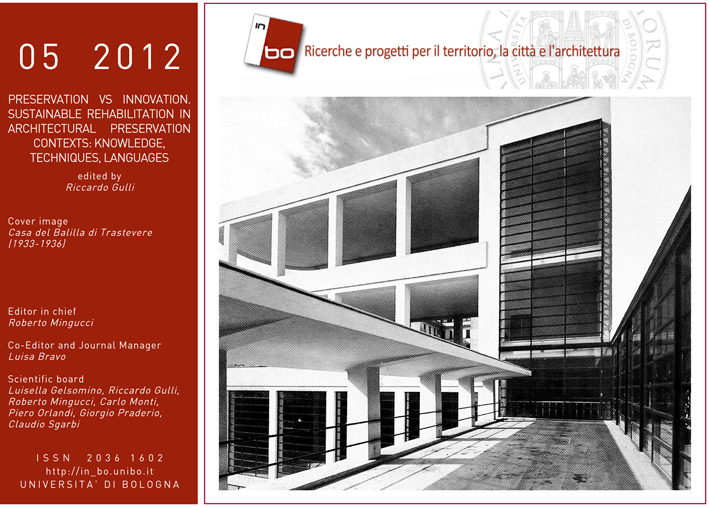Preservation vs Innovation. Sustainable rehabilitation in architectural preservation contexts: knowledge, techniques, languages
DOI:
https://doi.org/10.6092/issn.2036-1602/3476Keywords:
construction history, restoration of modern heritage, sustainable rehabilitation, energy requalification, integrated design, construction-systems, design, domoticAbstract
The theme of the preservation of the characteristics of protected architectural heritage must nowadays be correlated to new requirements for the adaptation of existing buildings to performance standards. This subject raises new questions about the theoretical assumptions and tools to be adopted to coherently answer that request. Focusing on the theme of energy requalification of heritage buildings - the primary focus of interest for the reduction of pollution emissions, according to Horizon 2020 objectives - the preservation of the meanings of an architecture work and of its linguistic, typological and material characteristics proofs to be essential for protection interventions on buildings. However this can’t be considered exhaustive, as the raised issue necessarily requires to be further addressed within the speculative domain of Technique, or rather to open out to the contribution that innovation processes and methods belonging to the field of scientific knowledge could offer.
Downloads
Published
How to Cite
Issue
Section
License
Copyright (c) 2012 Riccardo Gulli
Copyrights and publishing rights of all the texts on this journal belong to the respective authors without restrictions.
This journal is licensed under a Creative Commons Attribution-NonCommercial 4.0 International License (full legal code).
See also our Open Access Policy.
Metadata
All the metadata of the published material is released in the public domain and may be used by anyone free of charge. This includes references.
Metadata — including references — may be re-used in any medium without prior permission for both not-for-profit and for-profit purposes. We kindly ask users to provide a link to the original metadata record.







